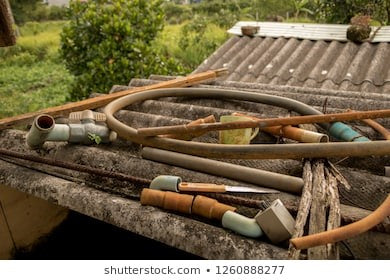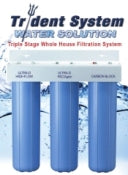No Products in the Cart
- CALL (02) 9000 1998 9AM - 5PM MON - FRI
Rainwater needs to be free of disease causing microorganisms (bacteria, viruses and protozoa) and harmful levels of chemicals, to ensure a safe drinking water supply. Contamination of collected rainwater with disease causing microorganisms from birds and other animals poses the biggest risk to health.
As well as disrupting supply infrastructure, fires can damage catchments, causing contamination that not even boiling can remove (https://www.theguardian.com/australia-news/2020/jan/09/bushfires-threaten-drinking-water-safety-and-the-consequences-could-last-decades)
A loss of power, for example, disables important water treatment processes such as chlorine disinfection, needed to kill microorganisms and make our water safe to drink.
Drinking water for the towns of Eden and Boydtown on the NSW south coast has been affected in this way over recent days. Residents have been advised to boil their water before drinking it and using it for cooking, teeth brushing, and so on.
Lead may be present in rainwater systems due to leaching from roofing material such as flashing or roofing screw washers. It may also be present in some grades of PVC piping and in older solder and brass fittings. Look for PVC-U pipes and fittings certified to AS/NZS 1477 to ensure they do no present a lead leaching risk. Lead on the roof is best managed by removing the source of lead or painting over it, so that it cannot come in contact with water. Lead, copper or other metals that may leach from plumbing materials are best managed by flushing pipes for several minutes each morning.

There are several methods for treating rainwater to remove any contaminants that may present a health risk and professional advice should be sought for the design and installation of an appropriate water treatment system.
These treatment methods include:
Filtration to remove particulate matter and some dissolved materials from water. There are many filtration devices available and microorganism and particle removal varies with the filter type. Some filter systems will require a power supply.

The AlkaViva TRIDENT Whole House Water Filter System is a low cost solution to water filtration. Offering exceptional heavy metal protection (including Iron, lead, cadmium, mercury, and chromium) they also offer excellent protection from many water based virus’ and bacteria.
Each system houses three 20 inch filters, manufactured using proprietary, patented electrodsorptive media technology. We are only interested in supplying the best solution for our customers and use only the best filters available.
See more information on these products at https://www.alkaviva.com.au/collections/whole-house-water-filters

STAGE 1: A 1 MICRON SACRIFICIAL PRE-FILTER
Stage 2: WHITE/CARBON/SILVER/ECO
Stage 3: Chlorplus, Chloramines Reduction Carbon Filter
UV disinfection by ultraviolet light irradiation (UV) is effective against most bacteria, viruses and protozoa. AlkaViva UV systems require relatively low maintenance, do not require the addition of chemicals and can include warning alarms to indicate equipment faults. Specialist UV chambers for treating rainwater are designed to provide a dosage of UV light at a given flow rate. UV systems are most effective when the water is clear and free of particles. Rainwater supplies may need to be filtered to ensure effective UV treatment. UV treatment does not remove chemicals from water. UV systems will require a power supply. Water that has been disinfected using UV should be used straight away, not stored in tanks.
As always I like to add firm evidence of the need for professional water filtration systems that AlkaViva provide. Below is official guidelines here in Australia published by the department of health. I have highlighted certain points worth reflecting on when it comes to rain water tanks
THE DEPARTMENT OF HEALTH
GUIDANCE ON USE OF RAINWATER TANKS
Microbial hazards
Collection and storage of rainwater introduces the potential for chemical, physical and microbial contamination. The most common hazards in water sources obtained from surface catchments worldwide, including roof run-off, are microbial pathogens of faecal origin (enteric pathogens). In most of Australia (exceptions are discussed below) chemical and physical quality of rainwater is relatively easy to maintain, but microbial quality is more difficult to manage.
Systems incorporating buried pipework (so called ‘wet systems’) are becoming increasingly popular to maximise yields from multiple gutters and where rainwater is plumbed into homes. Buried pipes can be susceptible to cross-connection and external contamination as well as potential impacts on aesthetic quality due to stagnation.
Rainwater tanks can also represent a health risk by providing breeding sites for mosquitoes.
Rainwater collected and stored in domestic tanks will contain a range of microorganisms from one or more sources. While most will be harmless, the safety of rainwater will depend on excluding or minimising the presence of enteric pathogens. Enteric pathogens include types of bacteria, viruses and protozoa. These organisms do not grow or survive indefinitely in water environments and are introduced into drinking water supplies by contamination with faecal material.
Tank rainwater can contain organisms referred to as opportunistic pathogens such as Aeromonas spp and Pseudomonas aeruginosa (Sinclair et al. 2005). Except for the severely immuno-compromised these organisms are not considered to represent a significant risk through normal uses of drinking water supplies (WHO 2008).
Most domestic rainwater tanks are installed above ground and collect run-off from roofs via guttering. Likely sources of enteric pathogens include:
Less commonly, rainwater is collected in underground tanks. If these tanks are not fully sealed or protected against ground run-off, then microorganisms associated with human and animal excreta may also contaminate stored rainwater.
More recently new houses being built in Australia have rainwater tanks fed by buried pipe work (so-called ‘wet systems’) in order to maximise yield while minimising the number of separate tanks. This also reduces the need for house walls to have ‘unsightly’ sloping, external downpipes. However, there are risks from this design approach.
Rainwater systems incorporating buried pipe can be susceptible to inadvertent cross-connections or contamination from external sources such as septic systems. In South Australia one outbreak of gastroenteritis was attributed to buried rainwater pipework being installed in the same trench as pipework to a septic system (SA Health, unpublished).
Microbial quality of drinking water is commonly measured by testing for Escherichia coli (E. coli), or alternatively thermotolerant coliforms (sometimes referred to by the less accurate term faecal coliforms), as indicators of faecal contamination and the possible presence of enteric pathogens. In the past, the broader total coliform group has also been used for this purpose. However, this group includes non-pathogenic organisms that can grow in water environments and be present in the absence of faecal contamination. Accordingly, total coliforms are no longer recognised as being a suitable indicator of faecal contamination or having health significance (ADWG).
Thermotolerant coliforms or E. coli have been commonly identified in domestic tanks (Fuller et al. 1981; Dillala & Zolan 1985; Fujioka & Chin 1987; Haeber & Waller 1987; Wirojanagud 1987; Gee 1993; Edwards 1994, Thurman 1995; Victorian Department of Natural Resources and Environment 1997; Simmons et al. 2001; Sinclair et al. 2005; Chapman et al. 2006 and 2008; Evans et al. 2007; Abbott et al. 2007; Rodrigo et al. 2009). This implies that enteric pathogens could often be present in rainwater tanks.
However, when surveys have included testing for specific pathogens, detection has been relatively infrequent (Sinclair et al. 2005; Chapman et al. 2008; Rodrigo et al. 2009). In Australia Salmonella and Campylobacter have been detected in small numbers of samples (Sinclair et al. 2005; Chapman et al. 2006; Rodrigo et al. 2009). Atypical enteropathogenic E. coli were detected in a survey of metropolitan Adelaide tanks (Rodrigo et al. 2009). In contrast, studies using PCR-based analyses detected relatively high frequencies of Salmonella, Campylobacter and Giardia in rainwater tanks in Queensland (Ahmed et al. 2008, 2009). A quantitative microbial risk assessment based on these analyses calculated risks of disease that are higher than the currently reported incidence of disease in Queensland (Ahmed et al. 2009). As indicated by the authors, further investigations into the significance of these results are required.